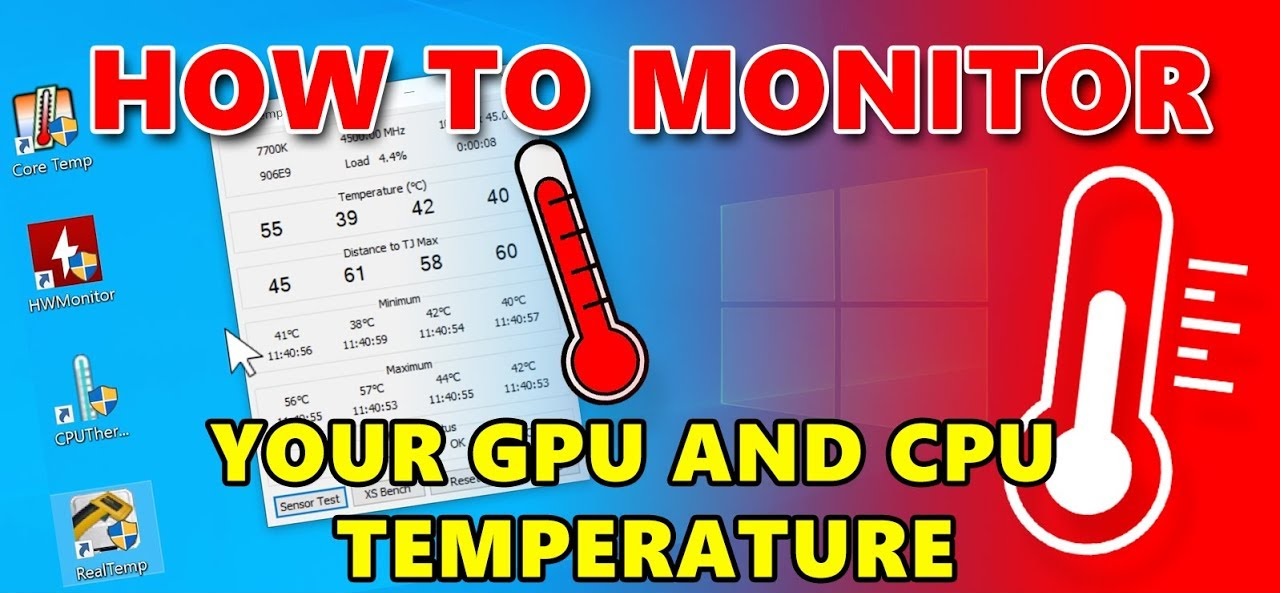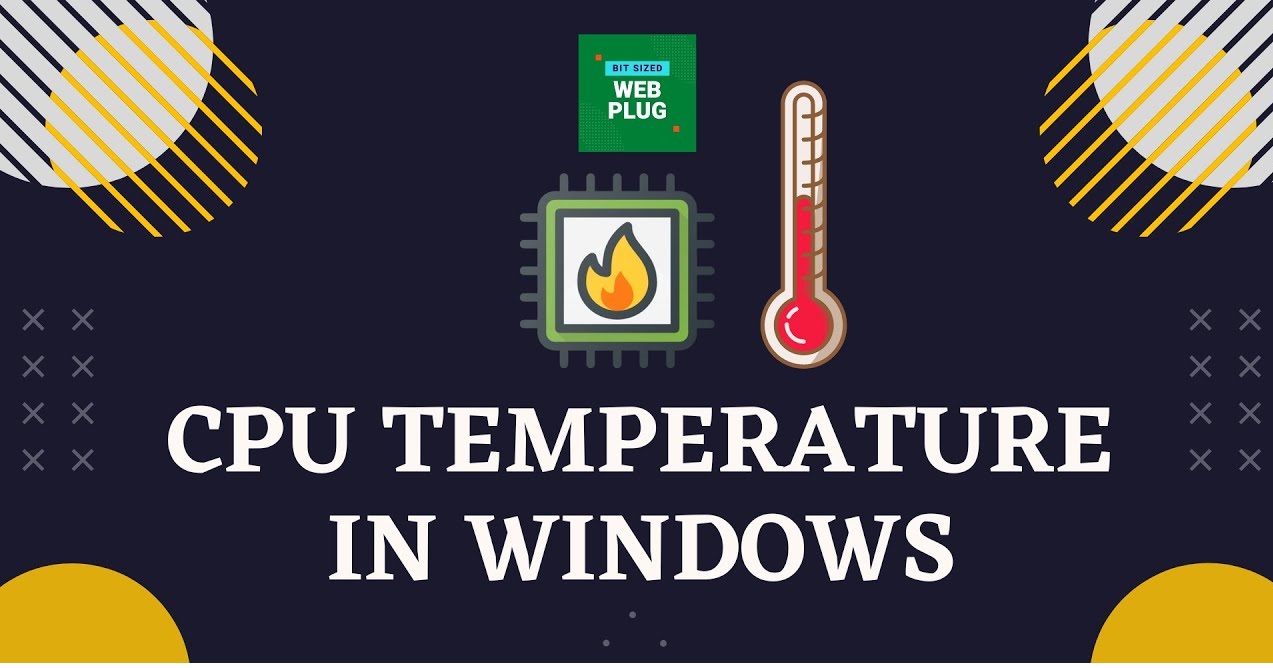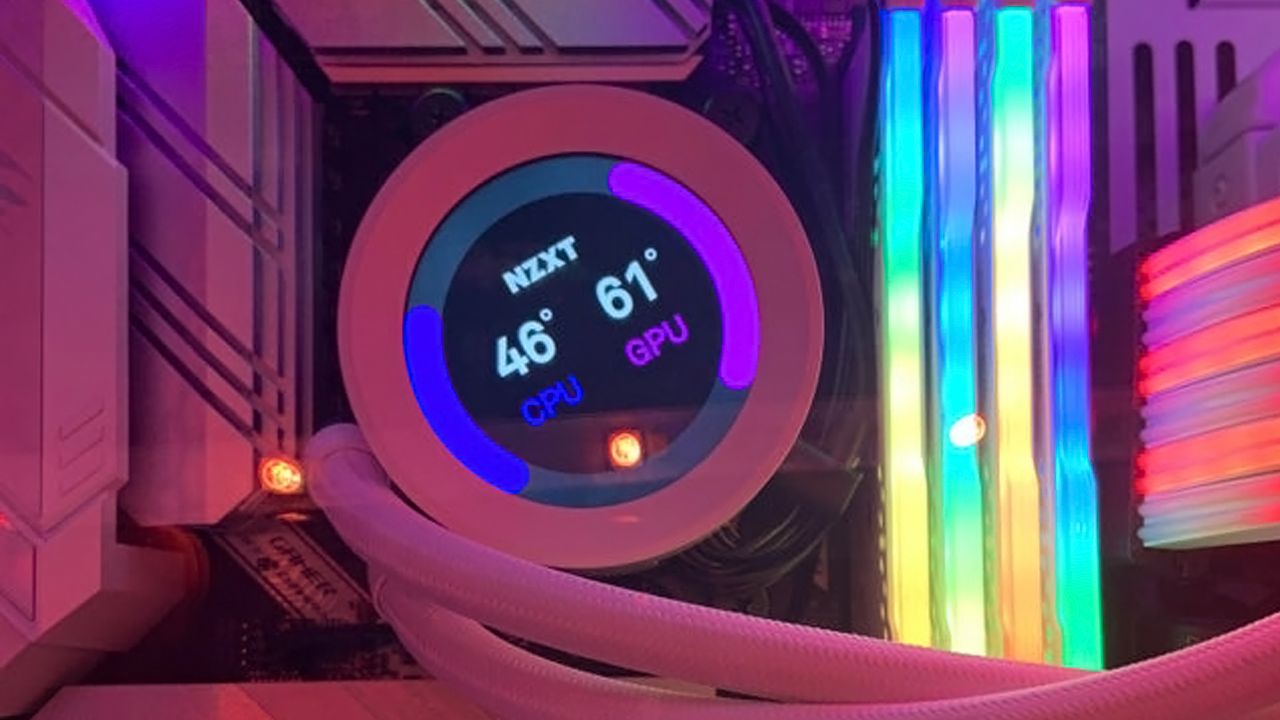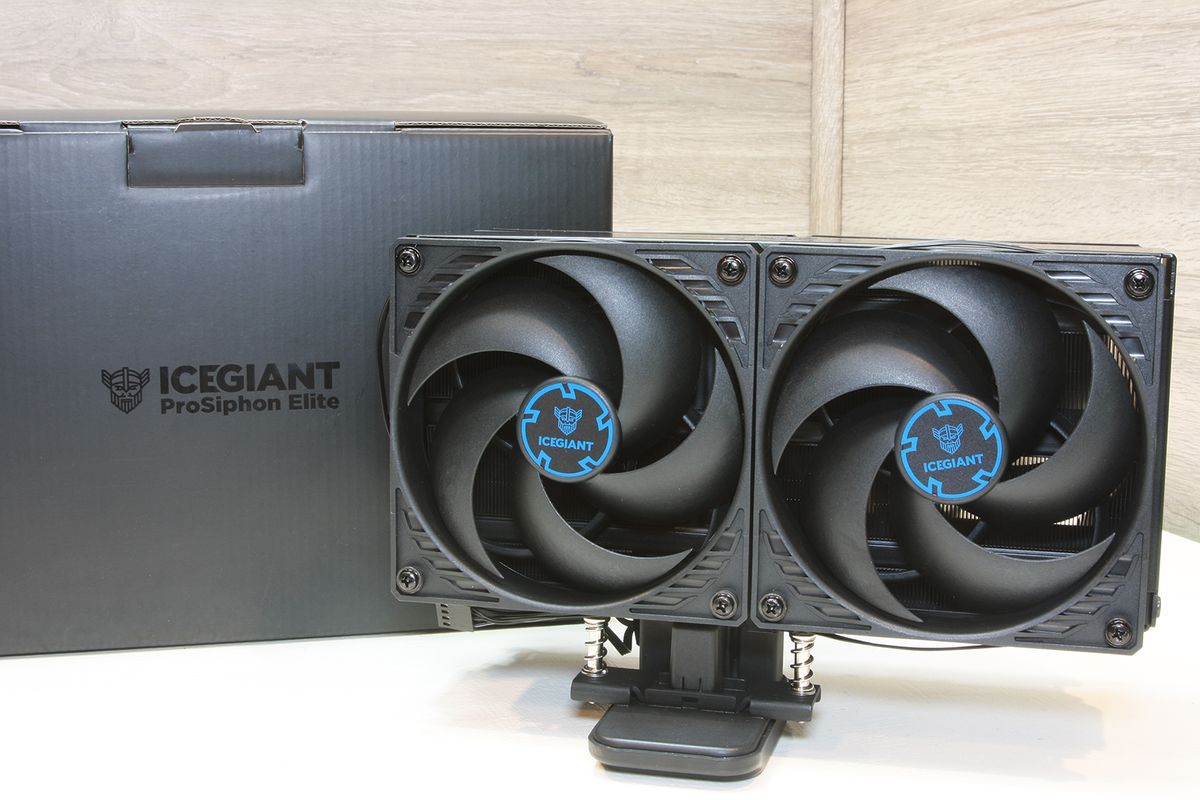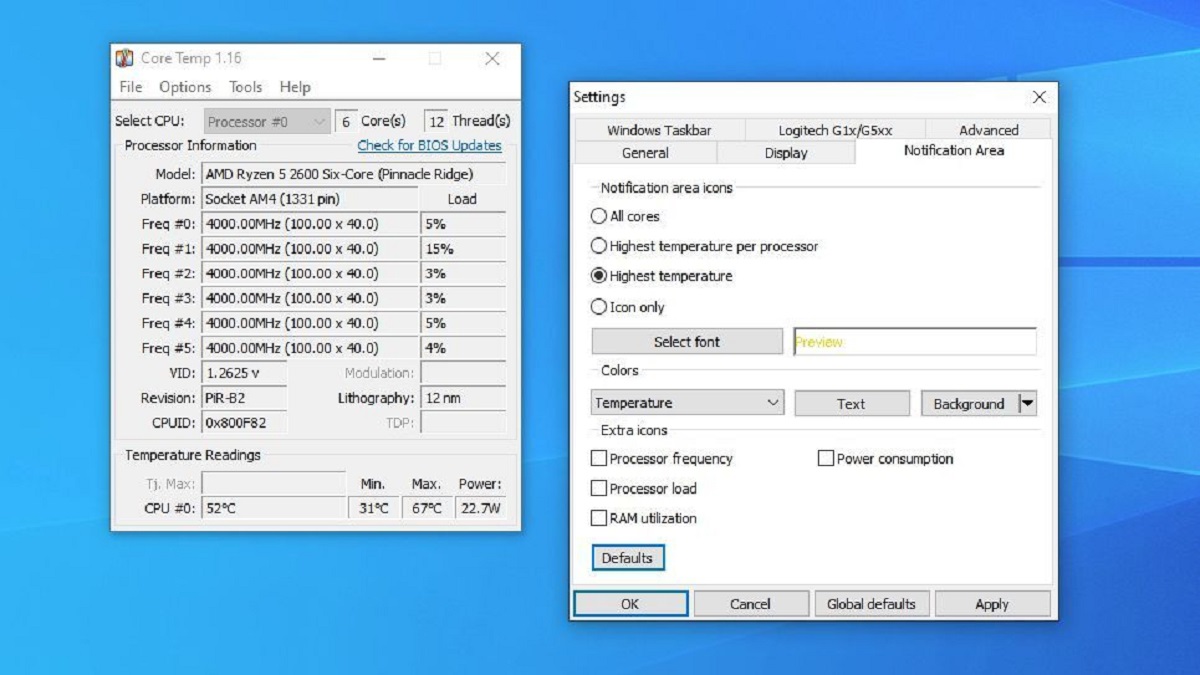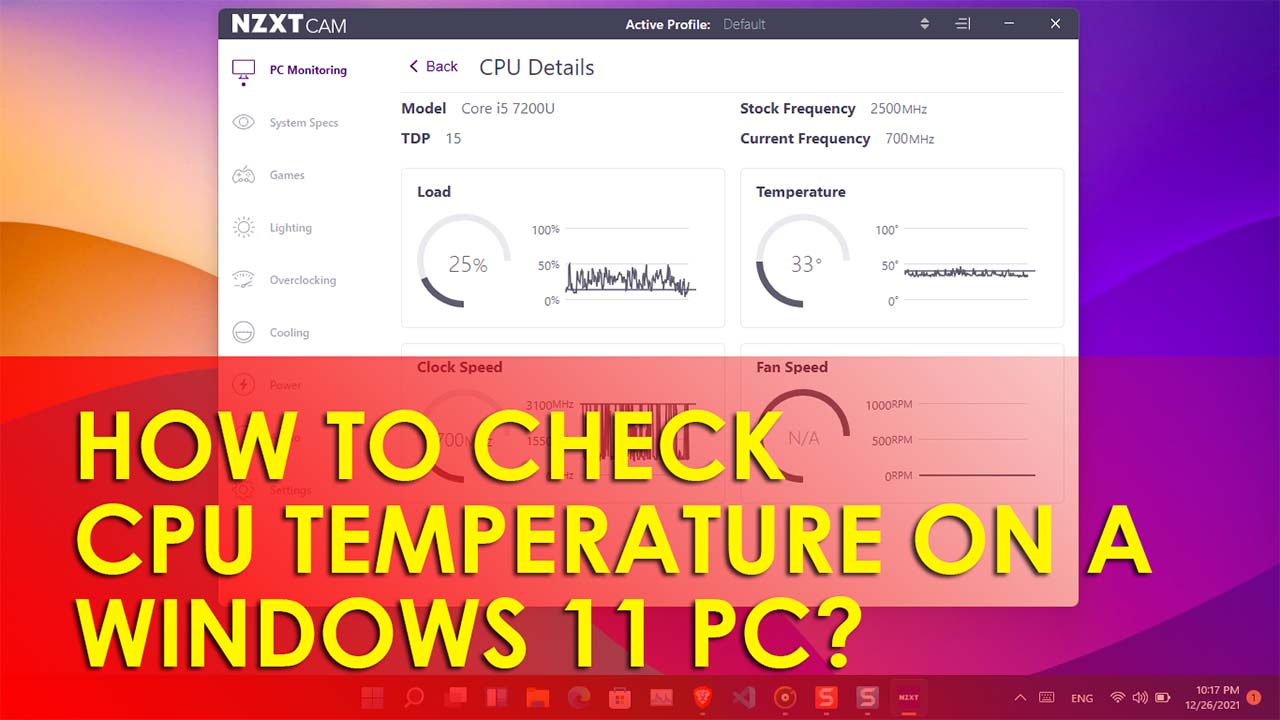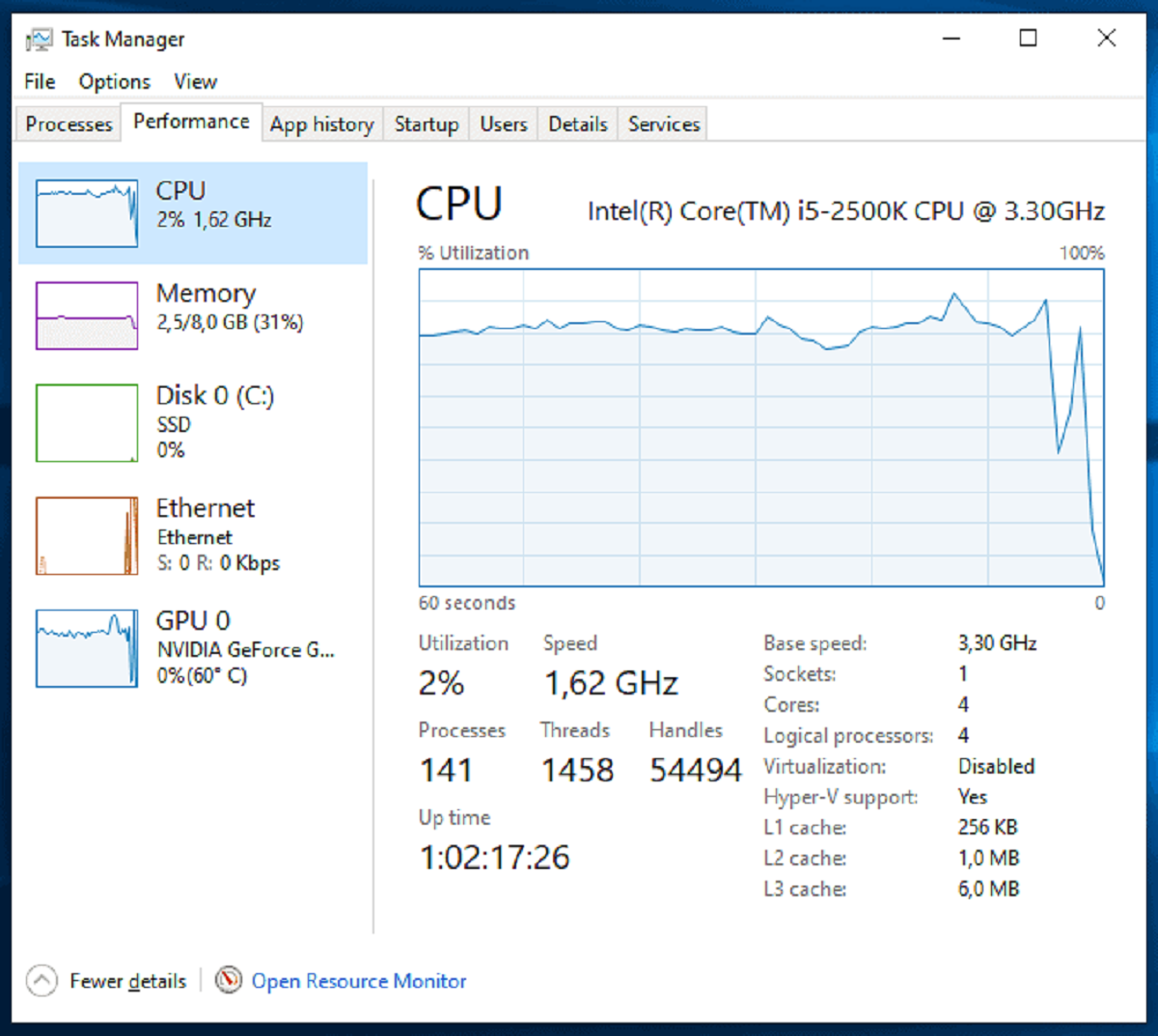What is CPU temperature?
CPU temperature refers to the measurement of how hot the central processing unit (CPU) of a computer is running. The CPU is often referred to as the “brain” of the computer since it performs all the necessary calculations and processes to run the system and execute tasks. As the CPU works, it generates heat due to the electrical currents flowing through its circuits.
Monitoring the CPU temperature is essential as overheating can lead to performance issues, system instability, and even hardware damage. The temperature of the CPU is influenced by factors such as the power consumption, workload, ambient temperature, cooler efficiency, and airflow within the computer.
CPU temperature is measured in degrees Celsius or Fahrenheit. The temperature reading can be accessed through various software applications, BIOS settings, or hardware monitoring tools. It is crucial to keep an eye on the CPU temperature to ensure that it stays within safe operating limits.
Modern CPUs come equipped with built-in thermal sensors that provide accurate temperature readings. These sensors allow users to monitor the temperature and take necessary actions to prevent any potential problems.
Excessive heat can cause the CPU to throttle, reducing its performance to prevent damage. If the temperature continues to rise, the computer may turn off abruptly to avoid permanent damage. Constantly operating at high temperatures can also shorten the lifespan of the CPU.
Monitoring the CPU temperature is especially important for users who engage in resource-intensive tasks such as gaming, video editing, or running demanding software. It is also crucial for overclockers who push their CPUs beyond their default speed limits, as overclocking can generate additional heat.
By regularly checking the CPU temperature, users can ensure that their computers are running optimally and take appropriate measures to prevent overheating. Understanding the baseline operating temperature of a CPU and its safe temperature limits is key to maintaining its performance, stability, and longevity.
Why is it important to monitor CPU temperature?
Monitoring the CPU temperature is crucial for several reasons. Here are some key reasons why it is important to keep an eye on the CPU temperature:
- Preventing overheating: The primary reason to monitor CPU temperature is to prevent overheating. Overheating can cause the CPU to throttle, resulting in reduced performance. In extreme cases, it can lead to system instability or even permanent damage to the CPU.
- Preserving system stability: High CPU temperature can lead to system crashes, freezes, or unexpected shutdowns. By monitoring the temperature, users can identify any abnormal increases and take necessary actions to avoid such issues.
- Prolonging hardware lifespan: Excessive heat can accelerate the degradation of electronic components. Regularly monitoring CPU temperature and ensuring it stays within safe limits can help prolong the lifespan of the CPU and other hardware components.
- Preventing performance degradation: When the CPU reaches high temperatures, it may automatically throttle its performance to reduce heat generation. By monitoring the temperature and keeping it within optimal ranges, users can ensure that their CPUs perform at their best.
- Identifying cooling system issues: Monitoring CPU temperature can help identify any potential issues with the cooling system, such as a malfunctioning fan or poor airflow. This allows users to address the problems promptly and prevent further heat-related issues.
- Optimizing cooling solutions: Knowing the CPU temperature can help users assess the effectiveness of their cooling solutions. This knowledge allows them to make informed decisions about upgrading their cooling systems or adjusting fan speeds to maintain lower temperatures.
- Preventing data loss: In certain cases, overheating can lead to data loss or corruption. By monitoring CPU temperature, users can mitigate the risk of data loss by avoiding extreme temperatures that may potentially damage storage devices or cause errors in data transmission.
In summary, monitoring CPU temperature is vital for preventing overheating, ensuring system stability, extending hardware lifespan, maintaining optimal performance, identifying cooling system issues, optimizing cooling solutions, and preventing data loss. By actively monitoring and taking appropriate measures to keep CPU temperature within safe limits, users can ensure the longevity and optimal performance of their computers.
How to check CPU temperature on Windows
Checking the CPU temperature on Windows is relatively straightforward. There are several methods you can use to monitor the CPU temperature. Here are three common methods:
- Using third-party software: There are numerous third-party software applications available that provide real-time monitoring of CPU temperature. Popular options include HWMonitor, Core Temp, and SpeedFan. These programs display temperature readings, fan speeds, and other system information. Simply download and install the software, and it will provide you with the necessary information.
- Using the BIOS: Some computer systems allow you to check the CPU temperature directly through the BIOS (Basic Input/Output System) settings. Restart your computer and access the BIOS by pressing a specific key during the boot process (such as F2 or Delete). Once inside the BIOS, navigate to the monitoring or hardware section, where you should find CPU temperature readings.
- Using Windows Task Manager: Windows Task Manager also provides basic CPU temperature information. Right-click on the taskbar and select “Task Manager” or press Ctrl+Shift+Esc to open it. In the Task Manager window, navigate to the “Performance” tab and click on “CPU” in the left-hand navigation pane. You will see a real-time graph displaying the CPU usage, but if you click on “CPU”, it will display additional details, including temperature.
Remember that the availability of CPU temperature readings through the BIOS or Windows Task Manager may vary depending on the computer manufacturer and the specific BIOS version.
It’s worth mentioning that while third-party software provides more comprehensive information and advanced features, it’s essential to download from trusted sources to avoid malware or adware. Always verify the authenticity and reliability of the software before installing it.
By using any of these methods, you can easily monitor the CPU temperature on Windows. Regularly checking the temperature will help you ensure that your CPU is running within safe limits and take necessary actions if it starts to exceed recommended temperatures.
How to check CPU temperature on Mac
If you’re using a Mac, checking the CPU temperature is slightly different compared to Windows. Here are a few methods you can use to monitor the CPU temperature on your Mac:
- Using third-party software: Similar to Windows, there are third-party software applications available for Mac that can display CPU temperature readings and other system information. Some popular options include iStat Menus, Macs Fan Control, and Intel Power Gadget. These applications provide real-time monitoring of your Mac’s CPU temperature and other vital system metrics.
- Using the Terminal: Mac computers come with a built-in utility called “Terminal” that allows you to access various system information, including CPU temperature. To check the CPU temperature using the Terminal, follow these steps:
- Open the “Finder” and navigate to “Applications” -> “Utilities”.
- Locate and open the “Terminal” application.
- In the Terminal window, type the command
sudo powermetrics --samplers smcand hit Enter. - Enter your administrator password when prompted.
- The Terminal will display various system information, including the CPU temperature, listed as “CPU Die Temperature”.
- Using Activity Monitor: The Activity Monitor is a built-in utility on Mac that provides insights into your system’s performance. To access CPU temperature information using the Activity Monitor, follow these steps:
- Open the “Finder” and navigate to “Applications” -> “Utilities”.
- Locate and open the “Activity Monitor” application.
- In the Activity Monitor window, click on the “CPU” tab.
- Look for the “Temperature” column in the CPU tab, which displays the CPU temperature in real-time.
It’s important to note that different Mac models may have variations in how CPU temperature is displayed or accessed. Additionally, using third-party software provides more detailed information and advanced features.
By utilizing these methods, you can easily keep track of the CPU temperature on your Mac. Regularly monitoring the temperature will help you ensure that your CPU is running within safe limits and take necessary measures if it starts to rise beyond the recommended thresholds.
How to check CPU temperature on Linux
Checking the CPU temperature on Linux is typically done through command-line utilities. Here are a few methods you can use to monitor the CPU temperature on your Linux system:
- Using the lm-sensors package: The lm-sensors package is a popular command-line tool used to monitor various hardware sensors, including CPU temperature. To install and use lm-sensors, follow these steps:
- Open the terminal on your Linux system.
- Install the lm-sensors package if it’s not already installed. On Ubuntu or Debian-based systems, use the command
sudo apt-get install lm-sensors. On Fedora or CentOS systems, usesudo dnf install lm_sensorsorsudo yum install lm_sensors, respectively. - Once installed, run the command
sensorsto display the current sensor readings, including CPU temperature.
- Using the psensor GUI: Psensor is a graphical utility that provides a user-friendly interface for monitoring hardware sensors, including CPU temperature. To install and use psensor, follow these steps:
- Open the terminal on your Linux system.
- Install the psensor package if it’s not already installed. On Ubuntu or Debian-based systems, use the command
sudo apt-get install psensor. On Fedora or CentOS systems, usesudo dnf install psensororsudo yum install psensor, respectively. - Once installed, search for “psensor” in your applications menu and open the psensor GUI.
- The psensor interface will display real-time temperature readings for various sensors, including CPU temperature.
- Using the conky system monitor: Conky is a highly customizable system monitor that can display various system information on your desktop, including CPU temperature. To install and use conky, follow these steps:
- Open the terminal on your Linux system.
- Install the conky package if it’s not already installed. On Ubuntu or Debian-based systems, use the command
sudo apt-get install conky-all. On Fedora or CentOS systems, usesudo dnf install conkyorsudo yum install conky, respectively. - Create a .conkyrc file in your home directory and configure it to display CPU temperature.
- Run the command
conky -c ~/.conkyrcto start conky and display the CPU temperature on your desktop.
These methods cover some of the common ways to check CPU temperature on Linux. Depending on your distribution and personal preferences, you may have access to additional tools or utilities for monitoring hardware sensors.
Regularly monitoring the CPU temperature on your Linux system will help you ensure that it remains within safe limits and take necessary actions if the temperature exceeds recommended thresholds.
Understanding safe CPU temperature ranges
Understanding the safe temperature range for your CPU is crucial to ensure optimal performance and prevent potential damage. Each CPU model has its own recommended temperature limits, typically provided by the manufacturer. Here are some general guidelines regarding safe CPU temperature ranges:
Idle Temperature: The idle temperature refers to the temperature when the CPU is not under load, and minimal processing is taking place. Typically, idle temperatures for most CPUs range between 30°C to 50°C (86°F to 122°F). However, this can vary depending on factors such as ambient temperature and the specific CPU model.
Load Temperature: The load temperature refers to the temperature when the CPU is operating under heavy usage, such as when running resource-intensive tasks like gaming, video editing, or rendering. The safe load temperature for CPUs is generally below 85°C (185°F). However, it’s recommended to stay well below the maximum temperature limit to maintain optimal performance and ensure long-term stability.
Maximum Temperature: Every CPU model comes with a specified maximum temperature limit, which should not be exceeded under any circumstances. Exceeding the maximum temperature can result in performance degradation, system instability, or even permanent damage to the CPU. The exact maximum temperature limit varies depending on the CPU model, but it is typically around 95°C to 105°C (203°F to 221°F) for modern CPUs.
It’s important to note that these temperature ranges are general guidelines and can vary depending on the specific CPU model, cooling solution, and individual system conditions. Some CPUs may have lower or higher safe temperature limits, so it’s crucial to refer to the manufacturer’s specifications for accurate information.
Additionally, it’s worth considering that prolonged exposure to high temperatures, even within the safe range, can still have detrimental effects on the CPU’s lifespan. Operating the CPU closer to the lower end of the safe temperature range is generally beneficial for longevity.
To ensure that your CPU stays within the safe temperature range, you can take various measures such as proper cooling, ensuring adequate airflow within the computer case, clearing dust buildup, and avoiding overclocking beyond the manufacturer’s recommendations.
Regularly monitoring the CPU temperature and taking necessary actions to keep it within safe limits will help maintain optimal performance, system stability, and ensure the longevity of your CPU.
Tips for keeping your CPU cool
Keeping your CPU cool is essential to maintain optimal performance, prevent overheating, and prolong its lifespan. Here are some tips to help you effectively cool your CPU:
- Ensure proper airflow: Make sure your computer has proper airflow by keeping vents, fans, and air passages clean and unobstructed. Dust and debris buildup can restrict airflow and lead to higher temperatures.
- Use an adequate cooling solution: Invest in a quality CPU cooler or cooling system to effectively manage heat. Consider options such as air coolers, liquid coolers, or heat sinks, depending on your budget and cooling requirements.
- Apply thermal paste correctly: When installing or replacing a CPU cooler, apply an appropriate amount of thermal paste between the CPU and the cooler. Thermal paste helps ensure efficient heat transfer and prevents air gaps that can affect cooling performance.
- Consider case fans: Install additional case fans to improve overall airflow within your computer case. Position fans strategically to create adequate intake and exhaust airflow, keeping components, including the CPU, cool.
- Avoid overclocking: Overclocking, pushing the CPU beyond its default speed limits, generates more heat. If you want to reduce heat, avoid overclocking or do so conservatively within the CPU’s safe limits.
- Monitor and control fan speeds: Utilize software or BIOS settings to monitor and adjust fan speeds. Ensuring the fans are running at appropriate speeds based on temperature can help manage heat more efficiently.
- Manage power settings: Adjust power settings on your computer to optimize energy consumption and heat generation. Choosing a balanced power plan or setting the maximum processor state to a lower value can help reduce CPU temperatures.
- Avoid blocking intake/exhaust areas: Keep your computer area free from obstructions that may block the intake or exhaust areas of the computer case. This includes ensuring that cables or objects do not impede the flow of air around the CPU and cooling components.
- Consider ambient temperature: The ambient temperature of the room or environment where your computer is situated can impact CPU temperatures. Keep your computer in a well-ventilated area and avoid exposing it to excessive heat or direct sunlight.
- Regular maintenance: Routinely clean dust and debris from fans, vents, and heat sinks to prevent heat buildup. This maintenance practice ensures optimal airflow and cooling efficiency.
By implementing these tips, you can effectively keep your CPU cool, maintain stable temperatures, and ensure the longevity and performance of your system. Remember to regularly monitor the CPU temperature to identify any potential issues and take necessary actions promptly.
Recommended software for CPU temperature monitoring
When it comes to monitoring the CPU temperature, there are several reliable software options available. These programs provide real-time temperature readings and other valuable system information. Here are some recommended software applications for CPU temperature monitoring:
- HWMonitor: HWMonitor is a popular software that provides detailed monitoring of various hardware sensors, including CPU temperature. It displays real-time information with accurate temperature readings, fan speeds, voltages, and more. HWMonitor is available for both Windows and Mac operating systems.
- Core Temp: Core Temp is another widely used software that specifically focuses on monitoring CPU temperature. It provides real-time temperature readings for individual CPU cores, allowing you to track the temperature of each core separately. Core Temp is available for Windows.
- SpeedFan: SpeedFan is a versatile software that not only monitors CPU temperature but also allows you to control fan speeds and monitor other system components such as hard drives and voltages. SpeedFan provides in-depth information and customization options. It is compatible with Windows operating systems.
- iStat Menus: iStat Menus is a comprehensive monitoring tool for Mac users. It offers a range of system monitoring features, including CPU temperature, fan speed, disk usage, network activity, and more. iStat Menus provides a customizable menu bar that displays real-time system information.
- Open Hardware Monitor: Open Hardware Monitor is a free and open-source software that supports Windows and provides detailed information about various hardware sensors, including CPU temperature. It offers a customizable interface and displays real-time readings for CPU temperature, fan speeds, voltages, and more.
These software applications are highly regarded for their accuracy, user-friendly interfaces, and additional system monitoring features. They allow you to keep a close eye on CPU temperatures and other critical system information to ensure optimal performance and prevent overheating.
When choosing a CPU temperature monitoring software, it’s essential to download from reputable sources and ensure compatibility with your operating system and CPU model. Always ensure that you are using the latest version of the software to benefit from any bug fixes or improvements.
Remember to regularly check your CPU temperature using these software tools and take necessary actions if the temperature exceeds safe operating limits.
Conclusion
Monitoring the CPU temperature is crucial for maintaining the optimal performance, stability, and longevity of your computer system. By keeping an eye on the CPU temperature, you can prevent overheating, performance degradation, system instability, and potential damage to your hardware components.
In this article, we explored what CPU temperature is and why it is important to monitor it. We discussed various methods to check CPU temperature on Windows, Mac, and Linux systems, including the use of third-party software, BIOS settings, and built-in utilities like Task Manager, Terminal, and Activity Monitor.
Understanding safe CPU temperature ranges is essential to ensure the proper functioning of your CPU. We discussed the general guidelines for idle temperatures, load temperatures, and maximum temperature limits. However, it’s crucial to refer to the manufacturer’s specifications for accurate information about your specific CPU model.
Additionally, we provided valuable tips for keeping your CPU cool, including ensuring proper airflow, using adequate cooling solutions, applying thermal paste correctly, managing fan speeds, and avoiding overclocking. Regular maintenance, such as cleaning dust and debris, can also contribute to maintaining optimal CPU temperatures.
Lastly, we recommended several reliable software applications for CPU temperature monitoring, such as HWMonitor, Core Temp, SpeedFan, iStat Menus, and Open Hardware Monitor. These tools provide real-time temperature readings and additional system information to help you keep a close eye on your CPU’s health and performance.
In conclusion, monitoring the CPU temperature, implementing cooling strategies, and using reliable software tools are all essential in maintaining a cool and efficient CPU. By effectively managing CPU temperatures, you can ensure the optimal performance, stability, and longevity of your computer system.







